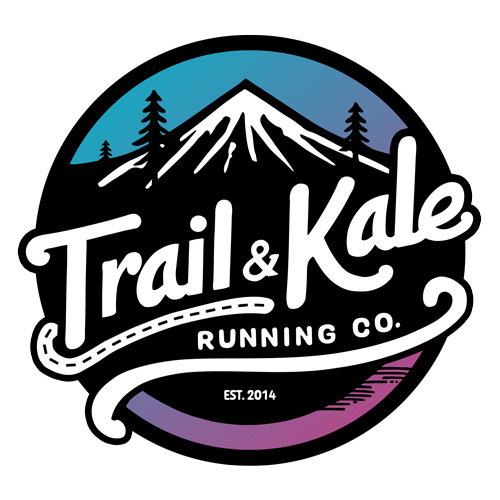Recovery runs are a popular element of many running training plans.
You’ve probably heard of them and how important they are, but what is a recovery run, why do one, and how do you do it properly to make sure you’re actually benefitting from it?
What the term ‘recovery run’ essentially means is an easy run that you do the day after you’ve completed an intense workout – whether that’s a hard workout such as speed intervals or hill repeats, a long run, or pushing your limits on race day.
In this post I explain:
- The benefits of doing recovery runs
- How to do them the right way, including getting your pace, heart rate zone and distance dialed in to maximize the positive effect these runs can have on your run training and recovery
- Alternative forms of active recovery
The benefits of doing recovery runs
As explained above, a recovery run is a low-intensity run that’s intentionally ‘easy’ and should be much slower and at a more relaxed pace than your regular training runs.
Ok, so why do an easy recovery run rather than simply resting, stretching or some other form of easy exercise?
Yeah, I know. You need the answer to this question because sometimes the LAST thing you feel like doing after a tough race or training session is another run. You’re sore! You want to sit on the sofa and eat and watch Netflix!!
Here are four key benefits of doing recovery runs.
1. Doing recovery runs can help you recover quicker
Getting moving the day after a tough run can be very beneficial for runners looking to recover as quickly as possible.
Doing a gentle, easy, slow run within 24 hours of an intense effort will promote circulation and blood flow to and from your muscles and around your body.
This allows your body to more easily remove lactic acid which can help speed up your overall recovery process and reduce muscle soreness that may develop following a high-intensity training run such as interval training, or a long run such as your weekend long run if you’re training for a marathon or half marathon, for example.

If you don’t get your body moving the day after an intensive long run or race, then it’s likely that your body will start to feel sore and your muscles may feel stiff or really tight.
The idea of a recovery run is that the movement, circulation and blood flow will help to ease or mitigate those issues.
2. Running after a tough effort can be useful for training yourself to run ‘on tired legs’
This is one of the reasons why recovery runs are so popular, especially among runners training for endurance races such as half marathons, full marathons and ultra marathons.
By running on tired legs, you have the opportunity to simulate how your body (and mind) may feel in the later stages of a long endurance race.
If you’re training for a multi-day race, then this is also a great way to get your mind and body prepared for the experience of running and racing several days in a row.
3. They count towards your overall weekly mileage
If you’re working on gradually building up your mileage to be able to run a longer endurance race then these easy runs, no matter how short or slow, will count towards your overall weekly mileage and general aerobic training.
That being said, this may be a reason not to do recovery runs, if doing so will push you over your target weekly mileage, which can take you on the path to over-reaching in your training efforts, which can ultimately lead to suffering from overtraining.
This shouldn’t be the case if you’re following a good training plan as that should have easy run, or recovery run days, planned in as part of your weekly workout schedule.
It’s important to avoid running more than your training plan, which means avoiding increasing your running mileage each week by more than 10% per week, as this can put you at an increased risk of picking up a running overuse injury.
You may also not want to do a recovery run if you’re experiencing niggles or pain in any specific parts of your body that you would prefer to give a break. Taking a break from doing more running could be what your body needs, because you don’t want that extra time on your feet to turn an ache or niggle into an injury!
In this scenario, consider other cardio alternatives that place less impact on your body, and particularly your lower legs, such as swimming, static cycling or easy hiking.
All of these activities are forms of active recovery and will still provide the aerobic and circulatory benefits of a recovery run, with less impact.
4. Easy runs are a good opportunity to focus on running form
Because you’re not focusing on pushing hard on running at speed when you’re doing a recovery run, it’s a great opportunity to focus on running with proper running form as well as how efficiently you breathe when running.
This should help you develop good form and muscle memory, which will in turn help your running efficiency and therefore speed improve.
Focusing on your form and breathing as you run is also a type of moving meditation and can help you relax and unwind mental and physical tension.
How to do a recovery run the right way
Ok so hopefully I’ve convinced you that these easy runs are a good idea for many runners. In that case, let’s cover how fast and how far you should run on those recovery run days.
Firstly, it’s important to know that recovery runs don’t have to be long in distance or duration, and they definitely don’t need to be anything close to fast!
What is a good recovery run pace?
You’re supposed to be running at a low-intensity effort.
So your pace during these easy runs should be whatever an easy pace is for you.
That pace will vary depending on your running speed, fitness level and overall level of fatigue from yesterday’s hard training run or race!
Rather than focusing too much on your pace itself, it’s more effective to gauge your running effort level using a metric such as your heart rate, which is personalized to you, your current level of fitness and training status.
What should your recovery run heart rate be?
If you’re already familiar with our free running training plans, then you’ll know that we talk a lot about ensuring you run each training run within a particular heart rate training zone.
Your heart rate and training zones are personalized to you, and allow you to train at an appropriate effort level.
These easy runs should be run in the lowest zones, Zones 1 and 2, because they’re intentionally ‘easy’.
Learn more about heart rate zone training for runners.
If you don’t have a running watch or other way to monitor your heart rate zone as you run, then another way to know if you’re running to fast is to ensure you can run at an easy, conversational pace, without getting out of breath.
If you can’t hold a conversation, then you’re going too fast!
How long should recovery runs be?
Depending on your training status and goals, your run should be around 20-40 minutes long, and certainly no longer than an hour.
Where should you do a recovery run?
The best places to do these types of runs are on easy, flat terrain, including pavements, flat trails, or a treadmill at low speed with little to no incline.
Trails and treadmills can be easier on your body than hard paved surfaces, as you’ll be running on softer surfaces, so those are what I would recommend, assuming you have access to one or the other to do your recovery run on.
Alternatives to recovery runs
As mentioned above, there are other ways to get in active recovery, if you do not need the additional training mileage, or really want to give your body a break from the impact of running but still want to do some aerobic exercises to help with recovering after an intensive training or race effort.
Great alternatives to recovery runs including hiking, swimming, gentle cycling, yoga and even just walking will help get your body and circulation moving.




